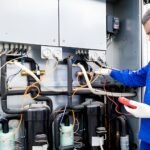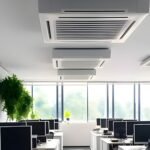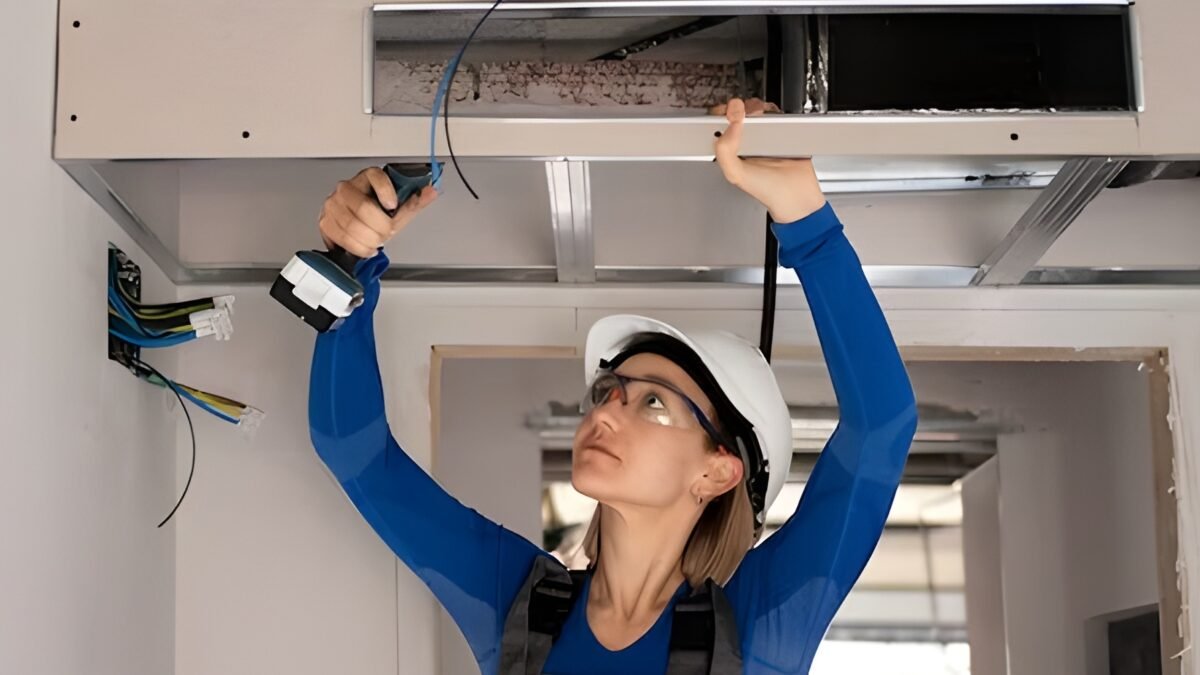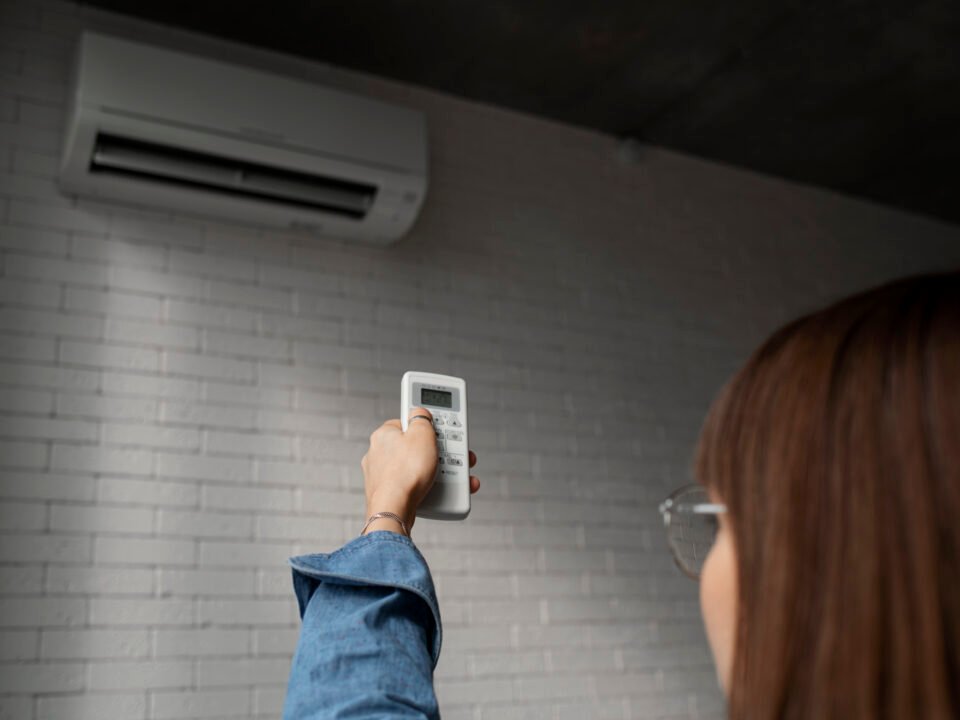
Impact of New Refrigerant Regulations on HVAC Systems
March 7, 2025
Enhancing Indoor Air Quality for Texas Businesses
March 28, 2025
Impact of New Refrigerant Regulations on HVAC Systems
March 7, 2025
Enhancing Indoor Air Quality for Texas Businesses
March 28, 2025Why Clean Air Ducts Matter
Air ducts play a critical role in maintaining indoor air quality and HVAC efficiency. Over time, dust, debris, mold, and other contaminants can accumulate in ductwork, leading to poor air quality and increased energy costs. Regular air duct cleaning helps keep air circulation clean, improves system performance, and enhances overall comfort in commercial and industrial settings. Without routine maintenance, businesses may experience declining air quality, increased allergy symptoms among employees, and a higher risk of HVAC system failure.
Health Benefits of Clean Air Ducts
Dirty air ducts can harbor allergens, bacteria, and mold, negatively impacting indoor air quality. According to the Environmental Protection Agency (EPA), indoor air pollution is one of the top five environmental health risks. Poor air quality can contribute to respiratory issues, allergies, and other health concerns, particularly in commercial spaces where many people share the same air.
A study published in the Journal of Occupational and Environmental Hygiene found that employees working in buildings with poorly maintained air ducts reported more respiratory problems and lower productivity levels. Additionally, mold buildup in air ducts can lead to serious health concerns, including chronic sinus infections and asthma flare-ups. Regular cleaning minimizes these risks by reducing the presence of harmful airborne particles, creating a healthier work environment.
Improved Energy Efficiency
Clean air ducts allow HVAC systems to operate more efficiently. When ducts are clogged with dust and debris, airflow is restricted, forcing systems to work harder to maintain temperature levels. This increases energy consumption and utility costs. The U.S. Department of Energy reports that HVAC systems can lose up to 40% of their energy efficiency due to dirty ductwork. Regular cleaning ensures better airflow, reduces strain on the system, and lowers operational costs.
According to the American Society of Heating, Refrigerating, and Air-Conditioning Engineers (ASHRAE), businesses that maintain clean air ducts and HVAC components can see an annual reduction of up to 15% in energy costs. In Texas, where HVAC systems often run year-round due to extreme temperatures, these savings can add up quickly, making air duct cleaning a cost-effective investment.
Extending HVAC System Lifespan
Commercial HVAC systems are significant investments, and routine maintenance is crucial for maximizing their lifespan. Accumulated dirt and debris force systems to work harder, increasing wear and tear on components such as motors and fans. Regular duct cleaning helps prevent premature breakdowns, reducing the need for costly repairs or replacements.
A case study from an office building in Fort Worth found that after implementing a bi-annual air duct cleaning schedule, their HVAC system required 30% fewer repairs and lasted an additional five years beyond its expected lifespan. This underscores the importance of proactive maintenance, especially in high-traffic commercial and industrial settings.
Signs That Your Air Ducts Need Cleaning
While industry standards suggest cleaning air ducts every three to five years, commercial and industrial facilities may require more frequent cleanings due to higher usage. Here are some common signs that indicate it’s time for a cleaning:
- Visible dust buildup around vents or registers
- Unexplained increases in energy bills, indicating airflow restriction
- Musty or stale odors when the HVAC system is running
- Increased allergy symptoms or respiratory issues among occupants
- Uneven airflow or temperature fluctuations throughout the building

The Role of Air Duct Cleaning in Texas Businesses
In Texas, where HVAC systems often run at full capacity due to extreme heat, regular air duct cleaning is essential for maintaining efficiency. The combination of high temperatures, humidity, and dust can accelerate the accumulation of debris in ductwork, making frequent cleaning even more important.
Businesses in cities like Dallas and Fort Worth rely on their HVAC systems for consistent climate control. A local HVAC contractor reported that 60% of their commercial clients who experienced unexpected system failures had neglected air duct maintenance. This highlights the critical role that air duct cleaning plays in preventing costly downtime and ensuring business operations run smoothly.
Choosing a Professional Duct Cleaning Service
Hiring a professional HVAC contractor is essential for thorough duct cleaning. Look for a company that uses high-powered vacuums and advanced cleaning techniques to remove contaminants. A reliable service provider should also inspect the system for leaks or damages that could affect performance.
When selecting a service provider, consider the following factors:
- Certifications and credentials (e.g., NADCA-certified technicians)
- Experience working with commercial HVAC systems
- Use of modern, high-efficiency cleaning equipment
- Customer reviews and testimonials
- Comprehensive service offerings, including HVAC maintenance and repair
DIY vs. Professional Air Duct Cleaning
Some business owners may attempt to clean air ducts using basic vacuuming techniques, but this is often ineffective. Professional HVAC contractors use specialized tools and powerful vacuums to remove deeply embedded debris, mold, and bacteria. Additionally, professionals can inspect ducts for damage, leaks, or other underlying issues that may compromise system performance.
Conclusion
Regular air duct cleaning is a vital part of commercial HVAC maintenance. It improves indoor air quality, enhances energy efficiency, extends system longevity, and promotes a healthier working environment. With Texas’ demanding climate, businesses must prioritize air duct cleaning to avoid unnecessary HVAC strain and costly repairs.
If you’re looking for professional air duct cleaning and HVAC maintenance, contact BIMS today. Our expert technicians provide reliable, high-quality services tailored to your business needs.
📞 Call us at: (817) 784-7330
📧 Email us at: info@bellomyims.com
🌐 Visit our website: bellomyims.com





